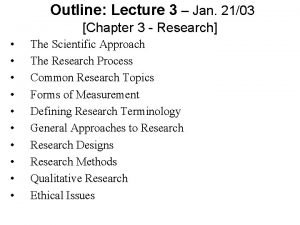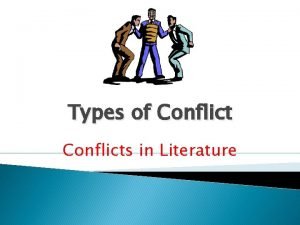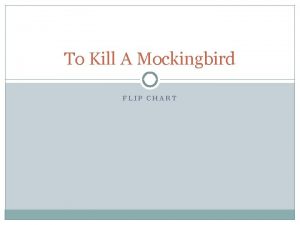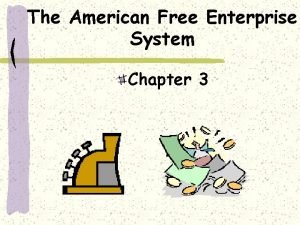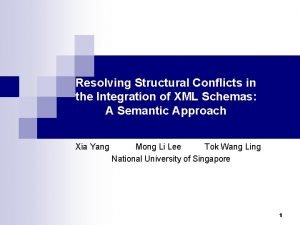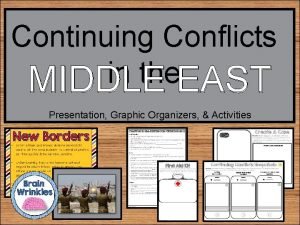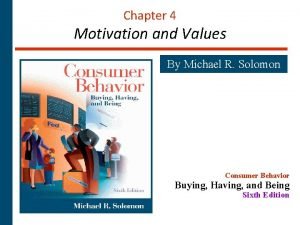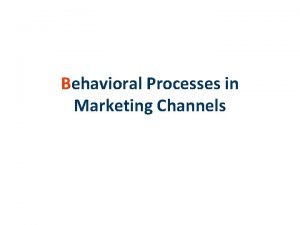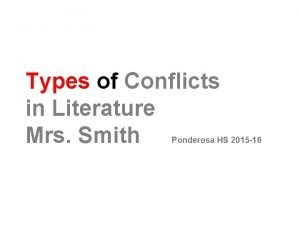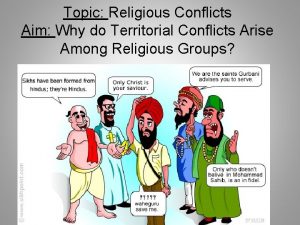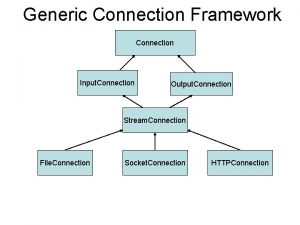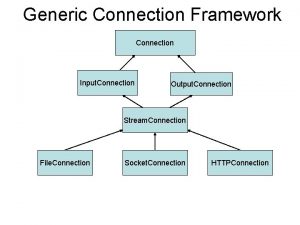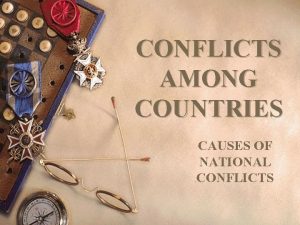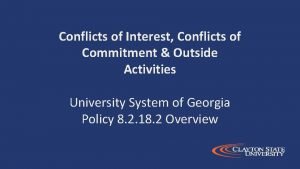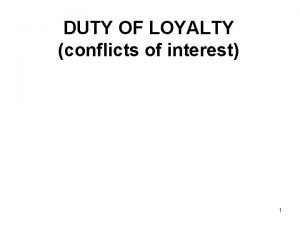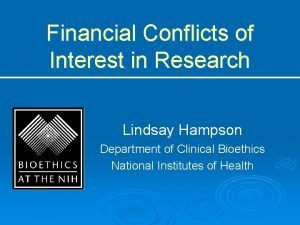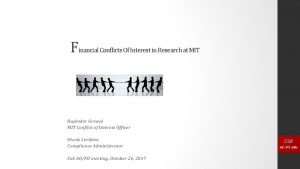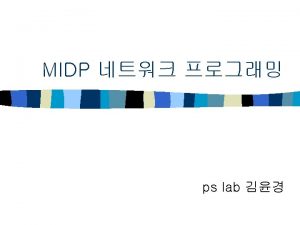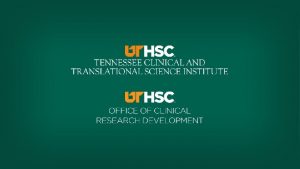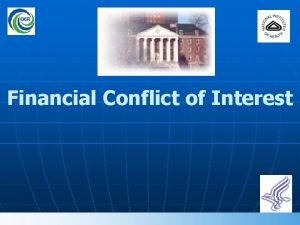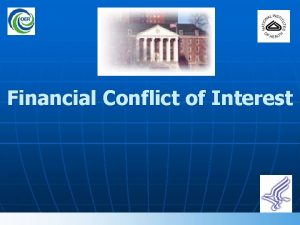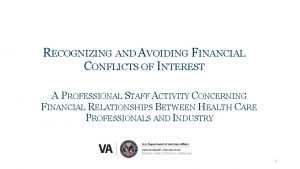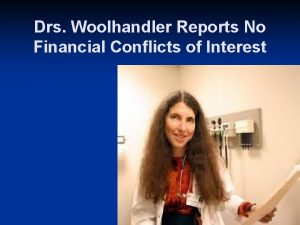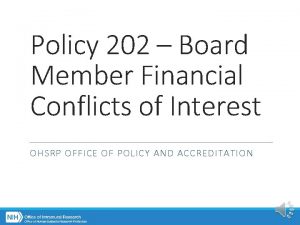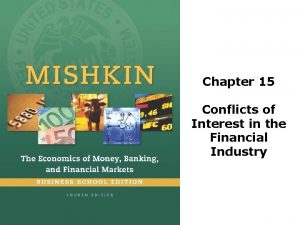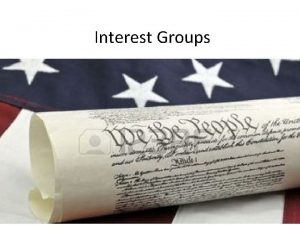FINANCIAL CONFLICTS OF INTEREST IN CONNECTION WITH RESEARCH







































- Slides: 39

FINANCIAL CONFLICTS OF INTEREST IN CONNECTION WITH RESEARCH National Human Research Protections Advisory Committee Working Group on Conflicts of Interest April 9, 2001

1 Overview Of Requirements n Multiple federal and state regulations and policies dictate procedures affecting human research n Public policy interests in avoiding improper incentives to conduct research on humans, or improperly to report the results of such research n Included among the various regulations and policies are requirements for management and disclosure of certain financial conflicts of interest affecting researchers © 2001 PROSKAUER ROSE LLP

2 Overview Of Requirements (cont. ) n Under the regulations, certain financial conflicts of interest must be disclosed to the institution where the researchers conduct their studies, or to the sponsor who conducts the research l A subset of those conflicts must, in turn, be disclosed to governmental agencies funding or reviewing the research conducted by the relevant researchers n State Law Requirements for Professional Conduct by Physicians n State and federal requirements prohibit research reviews by IRB members with conflicts © 2001 PROSKAUER ROSE LLP

3 Risks of Conflicting Financial Interests n New York Post articles in 1999 criticized physicians who accepted honoraria and other consulting fees from pharmaceutical companies when those physicians were responsible for enrolling subjects in research protocols sponsored by the same pharmaceutical companies n January 2000 JAMA article: considered 29 studies published in peer review journals, concluding that: l the extent of physician-industry interactions appears to affect prescribing and professional behavior and should be further addressed through policy and education l interactions with pharmaceutical representatives included gifts, samples, free meals, funding for travel to attend educational symposia, exposure to pharmaceutical representative speakers, CME sponsorship, honoraria, research funding, and employment © 2001 PROSKAUER ROSE LLP

4 Risks of Conflicting Financial Interests n Gelsinger case – death of 18 year old enrolled in gene therapy research l Significant financial ties of co-PI to sponsor have been questioned l Led to May 2000 policy adopted by American Society of Gene Therapy (organization representing 2500 professionals) prohibiting gene therapy researchers from owning equity, stock options or other ownership interest in the companies whose products they are testing in clinical trials © 2001 PROSKAUER ROSE LLP

5 Risks of Conflicting Financial Interests (cont’d) n Multiple articles in late 2000 in JAMA and NEJM analyzing institutional policies on conflicts of interest and disclosures l Institutional policies ranged from disclosures to FDA and/or PHS only as required by regulation, to voluntary disclosures and review by IRBs and even patients n August 2000, NIH hosted national conference on “Human Subject Protection and Financial Conflicts of Interest”; solicited public comments on subject n Late 2000: Draft Interim Guidance: Financial Relationships in Clinical Research; comments due March 2001 © 2001 PROSKAUER ROSE LLP

6 Federal Agencies With Requirements On Financial Disclosures By Researchers n Public Health Service of the U. S. Department of Health and Human Services (HHS) (includes NIH) n National Science Foundation (NSF) n Food and Drug Administration (FDA) © 2001 PROSKAUER ROSE LLP

7 PHS Financial Disclosure Requirements n n n Does not apply to privately funded research Applies only to human research funded by a PHS agency, or proposed for PHS funding Basic requirement: l Each “Investigator” who will participate in PHS-funded research must submit for review to an official at the research institution, a listing of Investigator’s “Significant Financial Interests”: (i) (ii) That would reasonably appear to be affected by the research for which PHS funding is sought; and In entities whose financial interests would reasonably appear to be affected by the research. 42 C. F. R. § 50. 604(c)(1) l Financial disclosures to the institution by the Investigators must be made by the time a grant application is submitted to PHS, and then updated either annually or as new reportable Significant Financial Interests are obtained © 2001 PROSKAUER ROSE LLP

8 Definitions For PHS Requirements n n What is a “Significant Financial Interest”? l Anything of monetary value, including cash, consulting fees or honoraria, stocks or other ownership interests, and patents, copyrights or other intellectual property rights, and royalties from intellectual property rights, if all the payments in one year to the Investigator (including payments to his or her spouse and dependent children) are expected to be more than $10, 000, or if the relevant ownership interest of the Investigator and spouse and children is worth more than $10, 000 and/or constitutes more than a five (5%) percent ownership interest in a single organization l DOES NOT INCLUDE salary and other compensation from the research institution, income from seminars, teaching or lectures sponsored by, as well as income from serving on advisory committees or review panels for, public or not-for-profit entities; does not apply to holdings in mutual funds What is “reasonably appears to affect the research”? l Regulations don’t provide guidance on this issue. Institution can set guidelines or definitions © 2001 PROSKAUER ROSE LLP

9 Reporting Of Interests By The Research Institution n A reportable conflict of interest exists when the designated official at the institution “determines that a Significant Financial Interest could directly and significantly affect the design, conduct or reporting of PHS-funded research. ” 42 C. F. R. § 50. 605(a) n The institution is not required to report the nature of the interest or other details of the conflict, but must assure PHS that it will manage, reduce or eliminate the conflict in accordance with the regulations n The reports must be made before spending any grant money, and the institution has 60 days to report any conflicting interests that it identifies after submitting the initial report n Note: the category of financial interests reportable to PHS is narrower than the category of Significant Financial Interests that researchers must report to their institutions © 2001 PROSKAUER ROSE LLP

10 Management of Conflicts Through Internal Policies n Under PHS regulations, an institution must establish guidelines for its designated official to take action to ensure that the conflicting interests are managed, reduced or eliminated. The institution must maintain a system to enforce these policies and to sanction violators as appropriate © 2001 PROSKAUER ROSE LLP

11 Management of Conflicts Through Internal Policies (cont. ) n Some of the potential methods and conditions that an institution may utilize to manage the conflicts of interests, include: l l l n Publicly disclosing the financial interest Having independent reviewers monitor the research Modifying the research plan Disqualifying certain Investigators from participation in the research Requiring the Investigator to divest the “Significant Financial Relationship” Severing relationships that create actual or potential conflicts Reasonable alternative solutions for managing the conflicting interests may be developed by the institution © 2001 PROSKAUER ROSE LLP

12 National Science Foundation: Distinctions From PHS Requirements n Conflict disclosure requirements very similar to PHS requirements n Applies to institutions receiving NSF funds if they have more than 50 employees n Definitions of “investigators” and their “significant financial interests” that must be disclosed to the institution are the same as set forth in PHS regulations © 2001 PROSKAUER ROSE LLP

13 FDA Financial Disclosure Requirements n Apply to a pharmaceutical company, device manufacturer or other party that has submitted a marketing application (and is therefore an “applicant”) to the FDA for approval of a human drug, device or biologic product and that submits to the FDA the results of “covered clinical studies, ” as a proposed basis for FDA approval — thus, retrospective in application (as opposed to prospective PHS requirements) n Clinical investigators and their research institutions do not have a direct reporting obligation to the FDA, BUT are obligated by the regulations to provide the research sponsor with sufficient financial information to enable the study sponsor to meet its disclosure obligations to the FDA © 2001 PROSKAUER ROSE LLP

14 Basic FDA Disclosure Obligation n For every “clinical investigator” who participates in a “covered clinical study, ” the applicant must disclose to the FDA, using Form FDA 3455, the nature of the following financial interests of the clinical investigators: (i) any financial arrangement between the sponsor and the clinical investigator, where the value of the compensation to the investigator for conducting the study could be influenced by the outcome of the clinical studies, such as payments which are higher for a favorable study outcome, including royalty payments for sales of the product or an ownership interest in the sponsor of the study; (ii) any other compensation from the sponsor of the study to the investigator or the institution to support activities of the investigator that is worth more than $25, 000 (not including the costs of conducting the study), which is given while the clinical investigator is conducting the study, or within one year after completing the study. Examples of this type of compensation include grants for ongoing research, equipment and honoraria; © 2001 PROSKAUER ROSE LLP

15 Basic FDA Disclosure Obligation (cont. ) (iii) (iv) (v) n any property or financial interest in the tested product held by the clinical investigator, including patents, copyrights or licensing agreements; any ownership or other financial interest (including stock and stock options) in the sponsor held by the clinical investigator, the value of which cannot be easily determined by reference to public prices, or any ownership interest in a publicly traded company that exceeds $50, 000 during the time that the investigator is conducting the study or within one year after completion of such study; and any steps taken to reduce the bias created by these disclosed financial relationships. For any clinical investigator who has no such financial interests, the applicant must submit a Form FDA 3454, certifying the absence of these financial interests. 21 C. F. R. § 54. 4(a). © 2001 PROSKAUER ROSE LLP

16 Differences From PHS Requirements n Note that dollar thresholds are higher n PHS requirements focus upon conflicts that “reasonably appear to affect the research” n FDA requirements focus upon conflicts relating to the relationship between the investigator and the research sponsor n Disclosure/reporting to FDA is retrospective, at time of application; PHS requirements are prospective © 2001 PROSKAUER ROSE LLP

17 Laws and Regulations Governing IRB Members n Multiple sources of law for IRBs: l State laws can be applicable to all human research conducted in a state, regardless of source of funding l FDA regulations - applicable to (subject to certain exceptions) clinical investigations regulated by the FDA and certain clinical investigations that support applications for research or marketing permits for products regulated by the FDA l Common Rule for 17 federal agencies and departments, extending to institutions/entities that accept funding from these agencies and departments © 2001 PROSKAUER ROSE LLP

18 The Prohibition on IRB Member Conflicts n HHS and FDA regulations and some state laws have provisions that: Prohibit the participation of an IRB member in the IRB’s “review of any project in which the member has a conflicting interest, ” unless that member is providing information requested by the IRB n No definitions of “conflicting interest” generally available in these regulations and laws © 2001 PROSKAUER ROSE LLP

19 The Prohibition on IRB Member Conflicts (cont. ) n Since there is no formal definition of these “conflicts, ” institutions may develop their own definitions, but should document and enforce the policies that set forth the definition of what could constitute a “conflicting interest” for an IRB member, including threshold dollar amounts or ownership interests that would trigger application of the institution’s policies n An institutional official — and preferably one who is not an IRB member — should be given the responsibility for monitoring enforcement of the compliance of IRB members with the IRB conflict of interest policy © 2001 PROSKAUER ROSE LLP

20 The Prohibition on IRB Member Conflicts (cont. ) n If an IRB member is a PI, such dual role can also cause a non-financial conflict, also apparently prohibited by IRB requirements n The potential for conflicts of interest should be considered when selecting IRB members l When IRB members frequently have conflicts (i. e. , often serve as PIs) and must abstain from deliberation and voting, their contributions to group review process may be diminished and could hinder review procedure l Problem is even more severe if the conflicted member is the IRB chair (Source: FDA Information Sheets Guidance for IRBs and Clinical Investigators) © 2001 PROSKAUER ROSE LLP

21 The Prohibition on IRB Member Conflicts (cont. ) n OHRP “strongly recommends” that when IRB members have a conflicting interest: l They leave the room when the IRB votes on that research project, and l Departure from the room is noted in IRB meeting minutes l Note that if a member’s departure from the room causes the quorum to be lost, the IRB cannot continue voting until the quorum is restored (Source: OHRP Compliance Activities: Common Findings and Guidance - 9/1/2000) © 2001 PROSKAUER ROSE LLP

22 HHS Draft Interim Guidance n As a result of August 2000 NIH meeting, OHRP, citing recent articles in NEJM and JAMA, recently released Draft Interim Guidance: Financial Relationships in Clinical Research, and is soliciting public comments. l Noting that many institutions have established a Conflict of Interest Committee, guidance indicates that such committee is useful in keeping IRB from bearing burden of becoming main group to consider these issues, but results of committee’s reviews, and how the institution has managed the conflicts, should be shared with IRB l Guidance also contemplates “institutional” conflicts of interests when institutions have stake in research l Recommends institution’s annual collection and review of IRB staff, chair and IRB members’ financial interests in commercial sponsors l Suggests institutions educate and train investigators and IRB members on conflict of interests issues l Draft introduces concept of IRB consideration of disclosure of financial relationships/conflicts in informed consent forms © 2001 PROSKAUER ROSE LLP

23 HHS Draft Interim Guidance n Comments received: l l l l Draft guidance too directive/not APA compliant Wait until private associations have acted Need additional consultation with stakeholders Roles of IRB and COI committees confused/overburdened IRBs COI function should be vested in dean/provost/administrator, not new committee “Institutional” COI is a new concept and guidance goes too far into uncharted territory Research-related compensation (i. e. , compensation for the research) should be included in COI analysis; “enrollment bonuses” require attention

24 HHS Draft Interim Guidance (cont. ) n Comments received: (cont’d) l l Disclosure of financial interests/conflicts to subjects is undefined; no practical experience; little data Attention needed to COI process in independent IRBs and CROs Draft guidance promotes bureaucracy, stifles research No need for guidance: u u l l “a few bad apples only” “anecdotes shouldn’t drive policy” PHS/FDA/NSF disclosure regulations and practices should be standardized COI is not only financial (e. g. , academic advancement, prestige)

25 HHS Draft Interim Guidance (cont. ) n Comments received: (cont’d) l Draft guidance has unclear goals: avoid COI, or manage COI? Is there “zero tolerance” for COI? l Goal of COI process: assure research integrity or protect subjects, or both?

26 NHRPAC Proposed Comments on HHS Draft Interim Guidance n Process l Working group charged l Review of Draft Interim Guidance l Conference calls with roundtable discussion l Face-to-face meeting (March 21) l Draft comments l April 9 presentation to NHRPAC

27 NHRPAC Proposed Comments on HHS Draft Interim Guidance n Goals/Objectives l Assure integrity of informed consent process l Promote research by assuring research integrity l Deter misinterpretation of data or misprision of research and professional duties

28 NHRPAC Proposed Comments on HHS Draft Interim Guidance l HHS/OHRP should proceed with guidelines, in careful, step-wise manner l Need for revisiting/review/evaluation l Integrate private association guidelines as developed

29 NHRPAC Proposed Comments on HHS Draft Interim Guidance n Defining Conflicts of Interest l Financial disclosure conflict of interest l Confidentiality needed in financial disclosure process l Threshold amounts needed; de minimis exceptions

30 NHRPAC Proposed Comments on HHS Draft Interim Guidance n Defining Conflicts of Interest (cont’d) l PHS standards preferred, due to PHS/FDA/NSF inconsistencies l Apply to all research, regardless of source of funding l Analyze research compensation also for fair market value assurance, not just honoraria, trips and investments l “Compelling and necessary” exceptions

31 NHRPAC Proposed Comments on HHS Draft Interim Guidance n Conflict of Interest Process l IRBs already overburdened l Create adjunct COI process, with COI committee, reporting to IRB, to receive and analyze financial disclosure l COI analysis precedes IRB review l Integrate, as appropriate, with existing COI mechanisms/ financial disclosure processes

32 NHRPAC Proposed Comments on HHS Draft Interim Guidance n Conflict of Interest Process

33 NHRPAC Proposed Comments on HHS Draft Interim Guidance n “Institutional” Conflicts of Interest l IRB members — recusal for any related financial interest l Increased incidence of institutional investments/interests in patents l Attenuated influence on IRB members who are affiliated l NBAC recommendations: 50/50 affiliated/unaffiliated IRB membership u l NHRPAC has doubts, but understands goals Support for attempts to define “institutional” conflicts and manage them

34 NHRPAC Proposed Comments on HHS Draft Interim Guidance n Disclosing Conflicts of Interest to Research Subjects l Little data on “best practices” l “Real” information needed, not undigested information or arcane facts l Basic principle: if a “real” conflict exists, information should be reasonably available to subjects/potential subjects l Goal: give subjects information that is understandable l “Generic” disclosure of COI process and of identification/ management of a conflict l Subject then may seek more information l Duty of institution and researchers to answer truthfully

35 NHRPAC Proposed Comments on HHS Draft Interim Guidance n One example of “generic” disclosure of conflicts to subjects: Mercy Hospital maintains a financial disclosure process, by which people who conduct research and Mercy itself must disclose any significant financial investments (for example, stock shares or patent holdings) that are related to the products being tested in research. This sort of information about the study that you are considering joining was disclosed to an internal Mercy committee, which directed that steps be taken in this research study to make sure that these investments of either Mercy or the researchers do not influence the way in which you will be treated or the way this research study will be conducted. If you would like more information about the process at Mercy for disclosure of these interests and their management, or about the actual financial interests that are present in this study, please ask the researchers or the research coordinator, and they will assist you.

36 NHRPAC Proposed Comments on HHS Draft Interim Guidance n Education and Compliance l Once policies are adopted, compliance must be assured l Compliance cannot occur without education of key staff

37 NHRPAC Proposed Comments on HHS Draft Interim Guidance n Conclusions l Generally supports concept of an interim guidance document, carefully crafted and subject to review, evaluation and revision l Pressing need to bolster integrity of the research enterprise and assure informed choice/consent of subjects

FINANCIAL CONFLICTS OF INTEREST IN CONNECTION WITH RESEARCH National Human Research Protections Advisory Committee Working Group on Conflicts of Interest April 9, 2001
 Conflict with interest
Conflict with interest Bolted connection
Bolted connection Slip critical connection
Slip critical connection Minimum fillet weld size
Minimum fillet weld size Text to self examples
Text to self examples Real vs nominal interest rate
Real vs nominal interest rate Effective interest vs nominal interest
Effective interest vs nominal interest Simple interest and compound interest
Simple interest and compound interest No financial disclosure statement
No financial disclosure statement Phenomenon of interest in research
Phenomenon of interest in research Financial methods of motivation definition
Financial methods of motivation definition Internal conflicts definition
Internal conflicts definition How is to kill a mockingbird a bildungsroman
How is to kill a mockingbird a bildungsroman Tkam plot diagram
Tkam plot diagram Lesson 1 american free enterprise capitalism
Lesson 1 american free enterprise capitalism Structural conflict
Structural conflict What is the internal conflict in fahrenheit 451
What is the internal conflict in fahrenheit 451 Conflicts in the middle east comprehension check
Conflicts in the middle east comprehension check Chapter 18 section 4 conflicts in the middle east
Chapter 18 section 4 conflicts in the middle east Victor frankenstein internal conflict
Victor frankenstein internal conflict External conflict definition
External conflict definition Chapter 9 resolving conflicts and preventing violence
Chapter 9 resolving conflicts and preventing violence Chapter 9 lesson 2 resolving conflicts
Chapter 9 lesson 2 resolving conflicts Approach avoidance conflict marketing
Approach avoidance conflict marketing Horizontal conflicts
Horizontal conflicts Chapter 12 lesson 2
Chapter 12 lesson 2 Channel conflicts
Channel conflicts Conflict of animal farm
Conflict of animal farm Mary warren conflict
Mary warren conflict External conflict in literature
External conflict in literature Chapter 9 resolving conflicts and preventing violence
Chapter 9 resolving conflicts and preventing violence Conflicts in wuthering heights
Conflicts in wuthering heights Person vs society examples
Person vs society examples Why do territorial conflicts arise among religious groups
Why do territorial conflicts arise among religious groups The old man and the sea criticism
The old man and the sea criticism Resolution of the masque of the red death
Resolution of the masque of the red death Call of the wild conflict
Call of the wild conflict Freak the mighty plot
Freak the mighty plot Name two ways to prevent conflicts from building
Name two ways to prevent conflicts from building Stakeholder gcse business
Stakeholder gcse business









